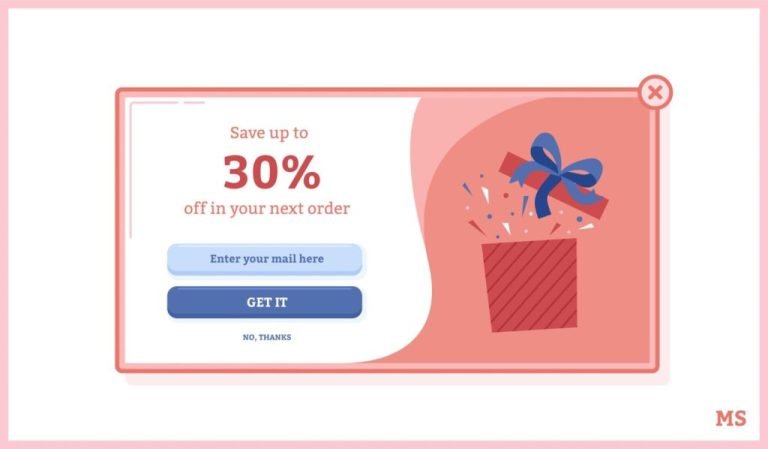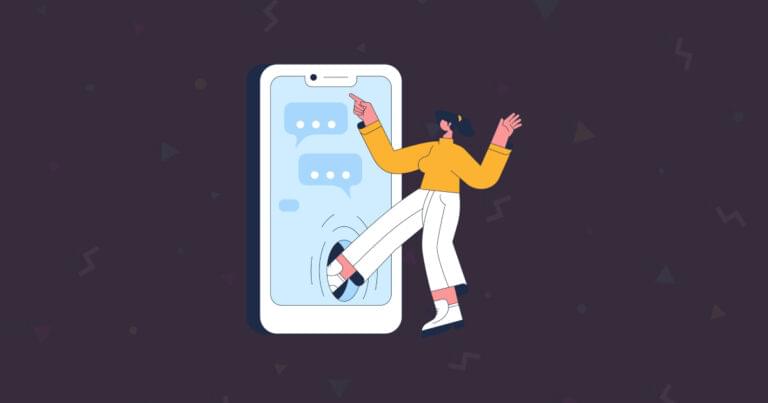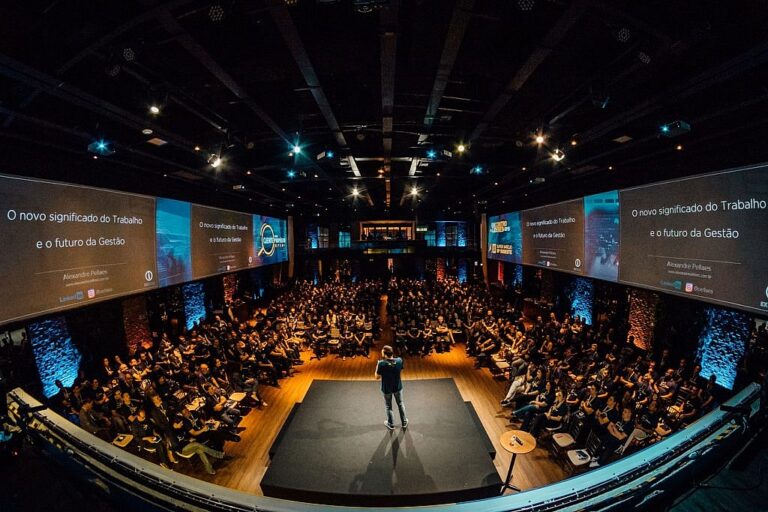CX (customer experience) and UX (user experience) are two important business strategies aimed at optimizing customer communication and engagement. The principles of UX have been around for centuries, but the term was first coined in the 1990s by Don Norman.
CX is a much newer concept that’s been gaining popularity as companies look to improve customer satisfaction. Many designers now argue that UX is a subset of CX, but there are some important differences between them.
In this article, we’ll look at where CX and UX differ and where they meet to improve the customer experience. But first, let’s define what CX and UX design are.
What is UX design?
Table of Contents
User experience design focuses on the interactions people have with a service or product. This is usually a digital product such as an app, website, or software like PD DataFrame Python. But UX can also apply to non-digital products.
The aim of UX is to create better-designed products to improve the user experience. And it works: over two-thirds of businesses say UX improves customer satisfaction. Plus, 62% say it improves brand perception. So UX design is crucial for businesses to attract and convert customers.
UX design considers everything that shapes the user experience, from how the actual product feels to how easy the buying process is. An amazing product is one that’s efficient and easy to use, and that’s what UX is all about.
If you need some help with designing your website, for example, search online for “tips on how to design website”.
UX covers four major disciplines:
- Experience Strategy (ExS)
- User Research (UR)
- Information Architecture (IA)
- Interaction Design (IxD)
Experience Strategy
Experience strategy aims to combine business and design strategies to create a holistic experience that gives value to both users and businesses at the places they interact. So ExS considers both digital and bricks-and-mortar experiences.
ExS roles include product designer and product manager. Their aim is to align the company vision with customer needs and technical capabilities. They help companies manage their teams and keep them focused on the user experience.
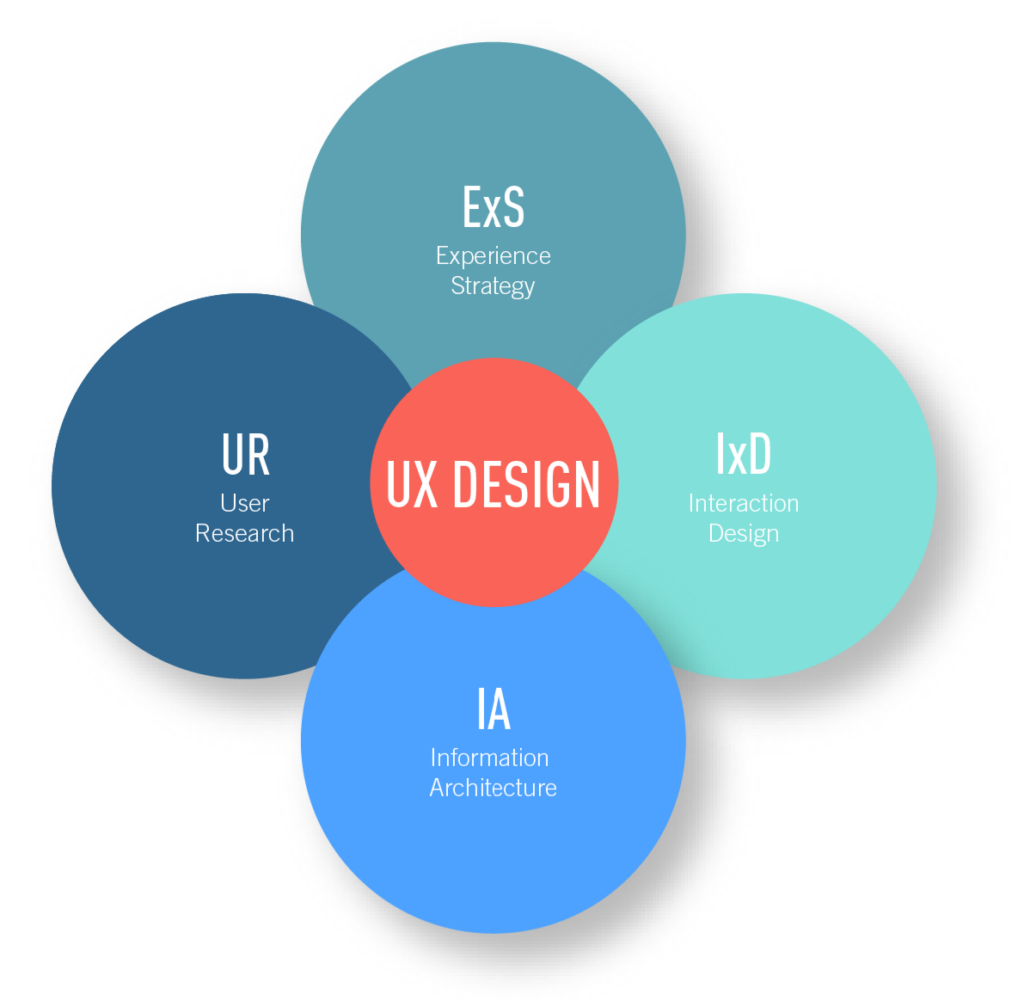
User Research
User research helps companies understand their users’ needs, motivations, and behavior. For instance, UR could help you understand why users are looking at alternatives for Grasshopper. This makes user research a vital part of UX design. In fact, integrating UR into product development boosts customer satisfaction by 30% and brand perception by 31%.
User researchers collect qualitative and quantitative data to create user personas. This involves collecting feedback from customers with surveys, interviews, and usability testing. They then use these personas to inform product development.
Information Architecture
Information architecture focuses on the structure of digital products. This includes how content is organized and the type of language used. The goal is to help users quickly find information with minimal effort. As such, you can use IA for wireframing to plan the layout of a product.
IA roles include data analyst, content strategist, and information architect.
Interaction Design
Interaction design focuses on the way users interact with a system. IxD considers all the interactive elements of a product, such as buttons, animations, and transitions. Interaction design roles include product designer, interaction designer, and experience designer. Their aim is to integrate ExS, UR, and IA into an interface that’s intuitive and effortless to use.
The role of UX designers
The role of UX designers is to make products and services accessible, user-friendly, and enjoyable. They usually work as part of a product team and bridge the gap between the user and the company.
The most common uses of UX design companies are discovering usability issues (68% of companies) and validating designs (66% of companies). But UX designers perform a variety of tasks, including:
- User research
- User testing
- Wireframing and prototyping
- Presenting designs to stakeholders
- Creating user personas
- Designing the information architecture of a product
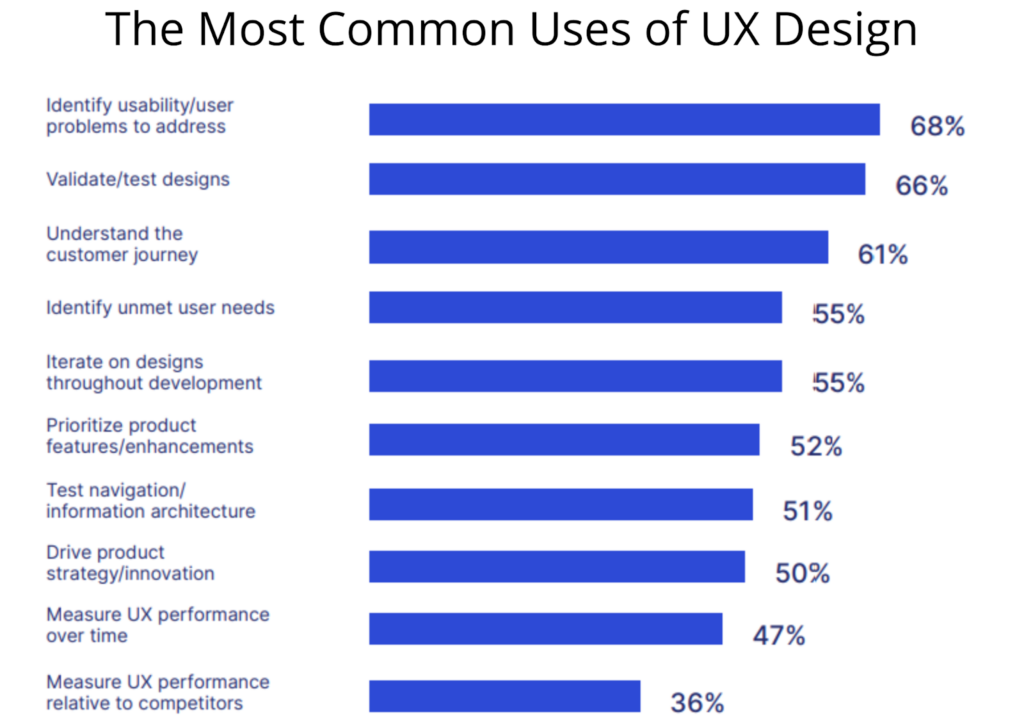
Depending on the company, UX designers may focus on UX for non-digital products. They may also be service designers that focus on the experience of using services like public transport. But whatever their area of focus, it’s their job to ask questions like:
- Is this product/service easy and intuitive to use?
- Is this product/service accessible to a range of users?
- Will this product/service make users happy?
- Is this product/service what users want?
What is CX design?
Customer experience design includes all the interactions a customer has with each of a business’s touchpoints. CX considers a company’s advertising strategy, reputation, pricing, customer service, delivery, sales process, and the usability of a specific product or service. In this sense, UX is part of the broader experience of CX design.
Let’s use a VoIP call center solution as an example. The customer experience isn’t only what it’s like to use the software, but also:
- What it’s like to buy the software
- How easy it is to access support
- How effective is the company’s marketing campaign
- What it’s like to upgrade or replace the software
- What it’s like to receive notifications or offers from the company
CX design also considers a customer’s emotional satisfaction. That is how they feel about a business. So, CX design is crucial to a company’s success. For instance, three-quarters of customers say it’s important to have a good experience on digital channels. The same goes for offline channels.
CX design considers three levels of customer experience:
- Single-interaction
- Customer journey
- Lifetime relationship
Single-interaction
The single-interaction experience is the customer experience during a single interaction or task. This is usually a short-term interaction with a product or service, such as ordering something from a website or signing up for a mailing list. Experiences at this level are only a small part of the total customer experience.
Design at the single-interaction level is what most people associate with UX design. In other words, this is the level most UX designers work at.
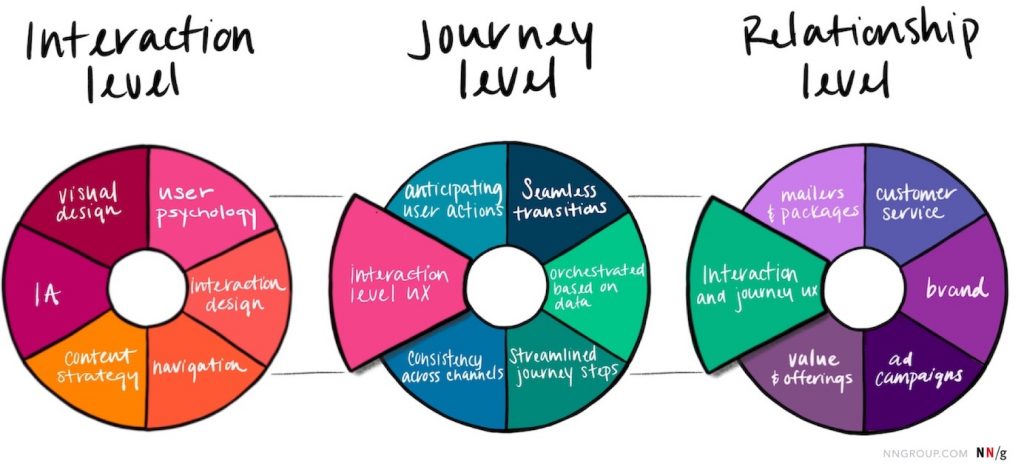
Customer Journey
The journey level of customer experience focuses on the series of interactions that take place to accomplish a goal. An example is buying journeys. It usually involves several channels, so a CX customer journey map may look something like this:
- You want to return a sweater, so you log in to your account and request a return.
- You print out the return label and take your parcel to the post office.
- A few days later, the company emails you to confirm the return and refund your money.
Many companies are now adopting an omnichannel approach to improve CX at the journey level. In fact, over one-quarter of companies say improving the omnichannel experience is a top CX priority.
Lifetime Relationship
The lifetime relationship level takes into account the single-interaction and customer journey levels to consider every interaction a customer has with a company. Each customer exchange with a company affects their perception of the company. So, CX design at this level is about nurturing the customer relationship.
For example, a software company that sells call center enterprise solutions would optimize their product to make it attractive to buyers and easy to use, upgrade, or uninstall. But they’d also look at improving their customer service and advertising campaigns.
The role of CX designers
To create a bulletproof CX strategy, CX designers analyze how customers feel about a brand. They also look at ways to improve the quality of interactions with them. This means problem-solving skills are a must.
CX designers may have backgrounds in advertising, marketing, psychology, management, sales, and customer service. They perform a variety of tasks, such as:
- User research and testing
- Collecting and presenting data
- Creating customer personas and empathy maps
- Mapping the customer journey
- Creating storyboards and workflows
- Defining business goals
- Tracking performance
In other words, CX designers focus on the who, what, where, when, why, and how of the customer experience.

How do CX and UX differ?
UX is an important part of CX, but there are some key differences to be aware of. These differences include:
- Focus
- Responsibilities
- Metrics
- Audience
- Testing
Focus
UX designers focus on how a user interacts with a single product or service?whether that’s an enterprise security solution or a hotel room. Their aim is to help users interact easily and successfully with a product. They want products to be accessible and give users a sense of satisfaction.
CX designers focus on the customer’s entire experience with the company. Their goal is to ensure customers have a good experience whenever they interact with a company. This includes both online and offline channels. They also want to boost brand revenue by nurturing customer loyalty.
Responsibilities
The responsibilities of UX designers revolve around the product or service. They spend most of their time on product design, usability testing, and improving the product based on user feedback. Both CX and UX design involves user research. But UX research tends to be smaller in scale and focuses on individual personas or groups.
The responsibilities of CX designers are more to do with boosting brand perception and customer loyalty. Their goal is to optimize marketing, communication channels, customer service, and all other business touchpoints. So, CX research tends to involve large-scale studies and surveys.
Metrics
Because CX and UX focus on different aspects of the customer experience, they use different metrics to measure their success rate. For instance, over 50% of UX designers use product and site analytics like cart abandonment rate and engagement rate. Also, 48% use outcome metrics like app store ratings, conversion rate, and support tickets. But CX designers use metrics like:
- Churn rate
- Customer lifetime value (CLV)
- Customer satisfaction (CSAT)
- Net promoter score (NPS)
- Average handle time (AHT)
For example, 63% of designers measure customer satisfaction, and 31% measure NPS. They may also look at how many customers the company gained or lost in a certain time frame.
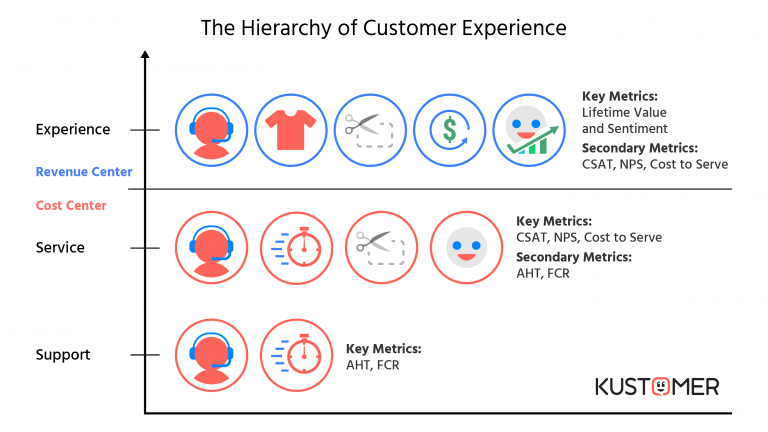
Audience
The target audience for UX designers is the product’s end-user, whereas CX designers target customers. What’s the difference? Customers aren’t always the product’s intended user.
For instance, say a company’s CEO is buying software to reduce their employees’ data privacy risks. A UX designer would focus on the employees (the users), while a CX designer would focus on the CEO (the customer).
By focusing on the customer, CX designers look to enhance the business-customer relationship to make it mutually beneficial. The customer gets good service, while the business gets more income and a better reputation.
In contrast, since UX designers focus on the user, any business benefits are more of a by-product.
Testing
UX design mainly involves usability testing. Usability testing ensures the product or service is intuitive and easy to use in the way the designer intends. It involves observing real people using a product. For instance, watching people use a work schedule app to see if they get confused or frustrated. UX designers can then use these insights to make improvements.
CX testing looks beyond usability to create a holistic view of the customer experience. This usually involves studying key metrics and mapping the customer journey with diary studies, interviews, and surveys. Once CX designers understand the current customer journey, they can look at ways to optimize it.
Where do CX and UX meet?
Although CX and UX are different, they’re also similar. They both focus on improving the customer experience, and without one, the other won’t succeed. If a user isn’t happy with a product, they may not use that company again. And if a customer isn’t happy with a company’s buying process, they won’t buy the product in the first place.
Companies should use CX and UX together to optimize the whole customer experience. After all, 64% of customers stopped doing business with a company because of a bad customer experience. In contrast, a great customer experience increases customer satisfaction. This in turn improves brand reputation and revenue.
It’s important businesses pay attention to customer feedback, including how customers use, buy, upgrade, and troubleshoot a product. As we’ve said, a great product isn’t enough unless a customer also has a great lifetime experience. For this reason, many companies are now looking to hire designers with skills in both CX and UX.
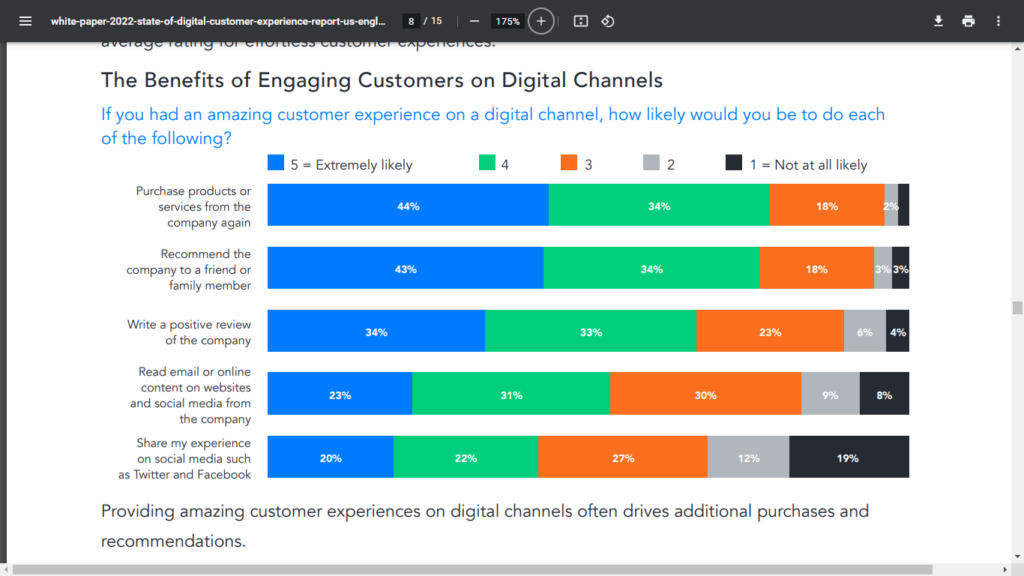
Takeaway
It should now be clear that although there are differences, UX is an integral part of CX. For businesses to succeed in an increasingly competitive market, they should use CX and UX together as part of their business optimization strategies.
Designers that consider both CX and UX will not only create better products. They’ll also enhance the customer experience at all stages of the customer journey.



